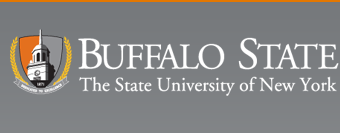
Event Title
Who Does Collaborative Learning Benefit in the Public Speaking Course?
Start Date
31-10-2013 11:00 AM
Description
Collaborative learning has been found to benefit students in various disciplines. Moreover, in the STEM literature, it was noted that minority students benefited the most from collaborative learning. Studies on the effects of collaborative learning in communication are limited. As a result, I examined the effect of collaborative learning in the public speaking course and investigated which cohort of students collaborative learning benefits the most. Variables that I studied include student learning, speech efficacy, and speech anxiety. Student learning was measured by students’ speech grades. I found that collaborative learning contributed to student learning. Moreover, I found that African American students, Hispanic American students, and students whose mother had no more than a high school education benefited the most from collaborative learning. In terms of speech efficacy and speech anxiety, results show that students in collaborative learning sessions did not feel more efficacious or less anxious about the speech they were to deliver. However, my study finds that public speaking courses did increase speech efficacy and decrease speech anxiety over the course of a semester. Details on the implementation of collaborative learning in the public speaking course were presented, and implications of the results were discussed.
Who Does Collaborative Learning Benefit in the Public Speaking Course?
Collaborative learning has been found to benefit students in various disciplines. Moreover, in the STEM literature, it was noted that minority students benefited the most from collaborative learning. Studies on the effects of collaborative learning in communication are limited. As a result, I examined the effect of collaborative learning in the public speaking course and investigated which cohort of students collaborative learning benefits the most. Variables that I studied include student learning, speech efficacy, and speech anxiety. Student learning was measured by students’ speech grades. I found that collaborative learning contributed to student learning. Moreover, I found that African American students, Hispanic American students, and students whose mother had no more than a high school education benefited the most from collaborative learning. In terms of speech efficacy and speech anxiety, results show that students in collaborative learning sessions did not feel more efficacious or less anxious about the speech they were to deliver. However, my study finds that public speaking courses did increase speech efficacy and decrease speech anxiety over the course of a semester. Details on the implementation of collaborative learning in the public speaking course were presented, and implications of the results were discussed.

